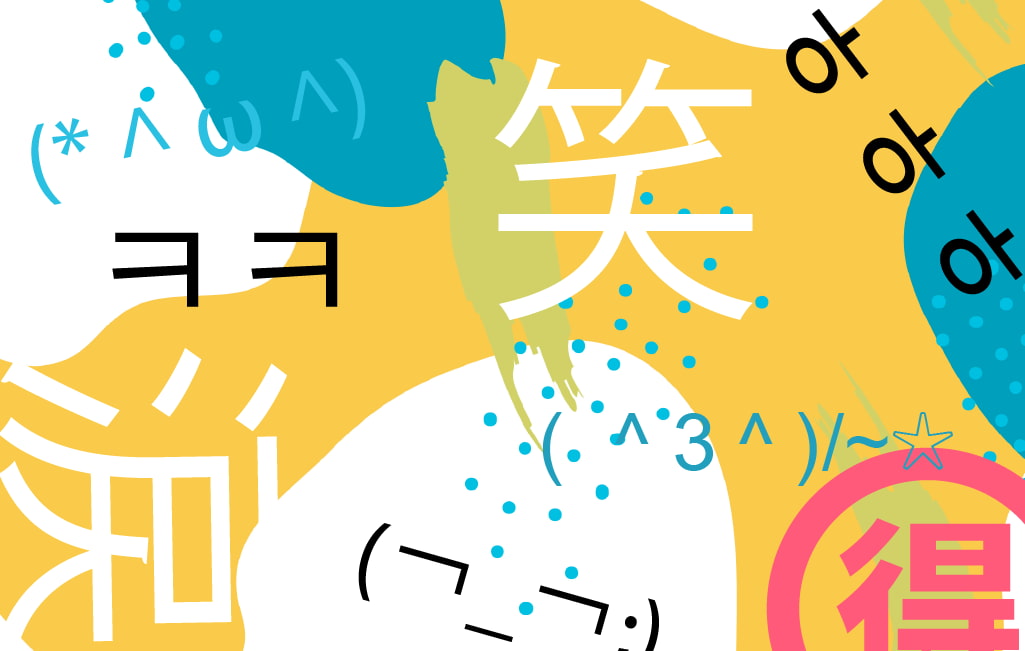
Korean and Japanese Emojis go far beyond the classic smiley face or thumbs up. In fact, they represent an entire digital language rooted in culture, emotion, and creativity.
Everyday life doesn’t look the same for everyone. But emotions? That’s where we meet. We all feel joy, frustration, awkwardness, love even if we text it very, very differently.
If you’ve ever messaged someone from Japan or Korea, you’ve probably stepped into the Korean and Japanese Emojis multiverse without even realizing it. These two cultures have turned texting into an art form, mixing characters, stickers, and icons into a cocktail of creativity and emotion. Honestly, we can’t get enough.
And if you haven’t experienced these digital expressions yet, don’t worry, we’re about to show you exactly what you’ve been missing.
Understanding Korean Slang: Why ‘Laughing’ Means More Than You Think
Texting in Korea goes beyond chatting, it’s a cultural language of its own. With over 95% of the population online and messaging apps dominating everyday conversations, it’s no surprise that text slang is everywhere.
From the creative use of emojis to playful expressions built with Hangul, Korea has developed a distinct way of expressing emotions, tone, and humor through digital text, often blending language and visual cues in ways that are both personal and deeply cultural.
Speaking of emojis, Koreans don’t just use them, they perform emotions in text. The go-to chat app is KakaoTalk, and its signature move is the “sticker.” Not your average yellow smiley. Think fully illustrated characters (like Ryan the lion, who doesn’t have a mane but does have an extensive merchandise line) doing everything from throwing tantrums to blowing kisses.
Then there’s the magic of Hangul-based expressions, phrases and slang rooted in Korean culture, written in Hangul, the Korean alphabet created in the 15th century to make reading and writing more accessible to everyone. Here’s a breakdown of the top Korean slang terms used in chats
- ㅋㅋㅋ = the local “LOL”
- ㅠㅠ / ㅜㅜ = crying, big time
- ㅇㅋ = “okay” but cool
- ㄷㄷ = shivers of fear or amazement
- ㅎㅎ = soft chuckle
- ㅗ = …let’s just say it’s not very polite
What’s beautiful here is the energy. Korean digital expressions are fast, funny, and always changing. It’s a whole emotional language layered into the way people type. And acronyms are popping up as fast as ever, thanks to the youth.
Japan: The Original Emoji Powerhouse
Japan actually invented emojis as we know them today back in 1999, when Shigetaka Kurita created the first set of 176 pixelated icons for a mobile internet platform. But even before that global glow-up, Japan had already created a whole emotional alphabet with kaomoji.
Kaomoji (顔文字), meaning “face characters” in Japanese, are text-based expressions that represent emotions, gestures, or even mini-scenes. Unlike simple Western emoticons like 🙂 or :(, kaomoji combine a wide range of symbols to form more detailed and expressive visuals.
They are made entirely with keyboard characters, and they’re weirdly perfect:
- (^▽^) = pure joy
- (T_T) = heartbreak
- (╯°□°)╯︵ ┻━┻ = rage quit
It’s like theater, but tiny.
And when it comes to drama, cuteness, and feelings in pixels, LINE takes the spotlight. Japan’s most-used messaging app brings emotions to life with an iconic emoji style. The LINE Friends characters like Brown and Cony are household names, merch stars, and honestly, mood mirrors, and even a Netflix show.
Want to show someone you’re embarrassed, hyped, or in love? There’s a sticker for that.
How Kanji Are Used Like Emojis in Japanese Messaging
And then there’s something even more uniquely Japanese: Kanji reactions in emoji form. In addition to emojis and kaomoji, Japan also uses Kanji characters (the logographic Chinese characters used in written Japanese) in creative or expressive ways similar to emojis, to visually convey emotions, reactions, or tone in digital communication.
Using individual Kanji as compact, expressive “emoji-like” symbols in chats or posts is something deeply tied to Japanese writing culture. For instance,
- 笑 (laugh) also commonly written as “w” from “warau” (to laugh)
- 涙 (tears)
- 汗 (nervous sweat)
- 草 (grass) multiple “w”s that grew into something more. String those laughs together (wwwww) and it looks just like grass
Even Apple got in on the action. Have you ever noticed those square emojis with mysterious symbols after the zodiac signs? Those multicolored squares with ideograms are based on Japanese kanji, and each one has a story:
- 🈲️ prohibited
- 🈚️ free of charge
- 🈯️ reserved
- 🈳️ vacancy
- ㊙️ secret
- 💮 well done. It’s called hanamaru (花丸), a flower mark used by teachers to reward good work (think of it as our golden star sticker)
These aren’t just visuals; they’re words that do the emotional heavy lifting.
Beyond Emoji: Ready to Communicate Across Cultures?
If you enjoyed this post about Korean and Japanese Emojis, you’re already halfway to mastering the subtle art of communication across cultures.
Our Korean Culture Training Workshops and Cross-Cultural Communication Programs are designed to help teams navigate cultural nuances, decode non-verbal cues, and connect more effectively in global business settings.
We also support your multilingual content with Transcreation, Localization, and Language Coaching — so your message lands the right way, in every market.
Curious to see how your business could benefit?
Download: our Free Executive Training Sessions and Workshops brochure is available as a convenient and portable PDF. Take it with you or share it with your team. Explore our cultural and language solutions today.


